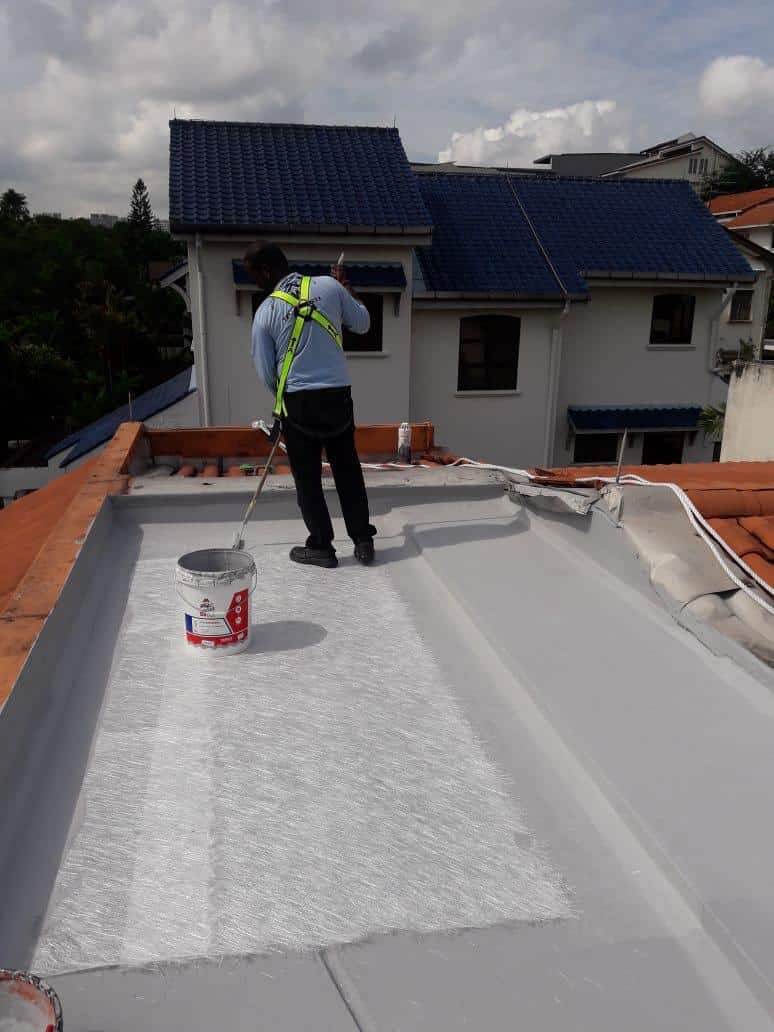Waterproofing is a vital aspect of preserving the integrity and durability of every house or structure. If you are a homeowner seeking to protect your home from the adverse effects of water or a contractor aiming to create sustainable buildings, learning how to pick the best waterproofing materials is important. Moisture damage can lead to high repairs, mold growth , and serious structural issues, rendering efficient waterproofing a priority for all property owners.
In this ultimate manual, we will explore the different aspects of waterproofing, from identifying the clues that your home needs waterproofing to comprehending the distinctions between indoor and exterior methods. We will also look into the widespread myths surrounding waterproofing, enabling you to make educated choices. With the right understanding and tools, you can shield your property from damp problems and save yourself a lot of money in subsequent repairs.
Recognizing the Importance of Waterproofing
Moisture-proofing is crucial for any building as it safeguards structures from damaging water exposure, which can lead to significant restoration costs and substantial loss of property value. Water infiltration does not only pose a risk to the integrity of the building but also to the health of occupants, as moisture can cause fungal growth and fungi growth. By adopting reliable waterproofing measures, property owners can construct a strong defense against the harmful effects of water.
Neglecting waterproofing can be a costly mistake. The concealed damage from leaks can lead to huge repair bills that far exceed the initial investment in waterproofing materials and solutions. For instance, unaddressed moisture issues in crawl spaces can compromise the foundation, resulting in significant structural problems. Thus, understanding the imperative nature of waterproofing can preserve you thousands of dollars in the time ahead.
In addition, waterproofing adds to reduced energy consumption in buildings. When exteriors, roofs, and basements are properly waterproofed, they help maintain stable indoor temperatures, reducing the need for unnecessary heating or cooling. This not only lowers power expenses but also enhances living conditions. Furthermore, https://aluneed.ca/ is more robust in adverse weather conditions, ensuring enduring defense for your investment.
Key Points When Choosing Waterproofing Solutions
When selecting waterproofing products, the first key consideration is the exact area you need to protect. Various surfaces, such as cellars, ceilings, and washrooms, have unique needs. As an example, basement waterproofing often needs solutions that can tolerate hydrostatic pressure, while roof waterproofing demands products that resist UV damage and temperature fluctuations. Determining the exposure levels and moisture conditions of the area will assist in selecting the most effective product.

Another important factor is the type of materials used in the waterproofing product. Look for high-quality materials that offer strength and longevity. For example, membranes and coatings should be flexible enough to adapt to building movement while maintaining a solid barrier against water infiltration. Additionally, consider if you prefer a solvent-based, water-based, or cementitious product, depending on the intended application and environmental impact.
Lastly, the ease of application is crucial. Some waterproofing solutions are designed for DIY use, while some may need professional installation. Think about your skill level and whether you have the tools needed for the job. It’s also smart to review the manufacturer’s instructions and recommendations regarding application conditions, such as temperature and humidity, to ensure optimal performance.
Common Waterproofing Techniques and Approaches
In the context of safeguarding your house from liquid damage, there are numerous effective waterproofing methods to think about. One popular method is the use of impermeable membranes, which establish a shield that prevents moisture from penetrating surfaces such as cellars, walls, and roofs. These membranes can be fabricated from multiple materials, including elastomer, bitumen, or polyvinyl chloride, and are suitable for both interior and exterior applications. Proper installation is vital to ensure that these membranes operate effectively, thus safeguarding your assets from leaks and water intrusion.
Another effective technique is the use of sealant materials and coatings. These products are applied directly to areas and act as a barrier against water. For instance, waterproofing paints can be applied to walls and roofs to prevent mold and mildew growth, particularly in bathrooms and kitchens. Additionally, elastomeric coatings are excellent for level roofs, providing adaptability and durability to withstand severe weather conditions while keeping liquid out. Picking the suitable sealant for each specific area of your property is essential to ensure long-lasting use and optimum protection.
For external structures, consider installing drainage systems and downspouts to divert moisture away from your land. French drains, submersible pumps, and channel drains can effectively reduce the risk of liquid accumulation around foundations and basements. Combined with correct grading of the terrain, these drainage methods reduce the chance of penetration. Applying a holistic approach with these strategies ensures sustained protection against liquid damage, ultimately saving you from costly repairs in the coming times.
